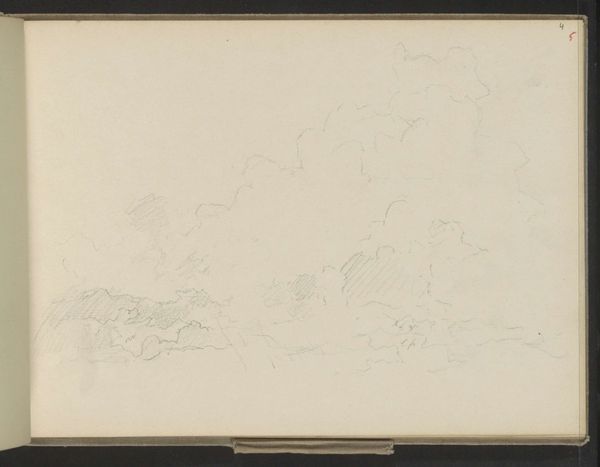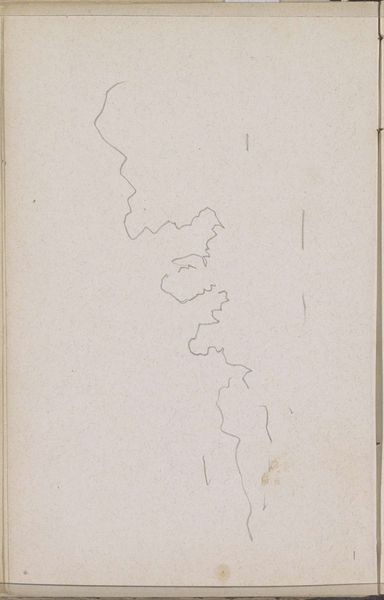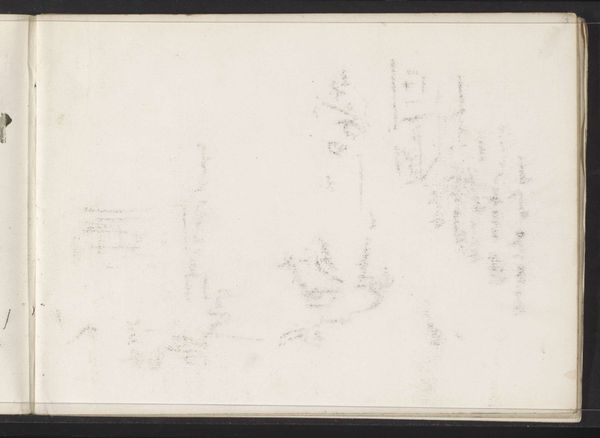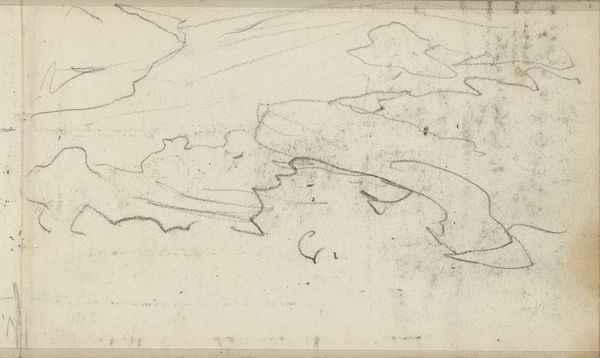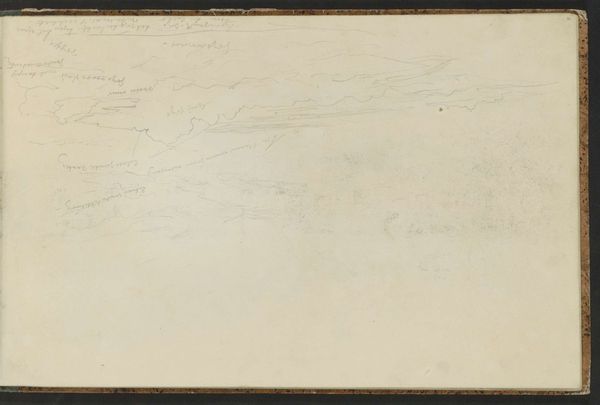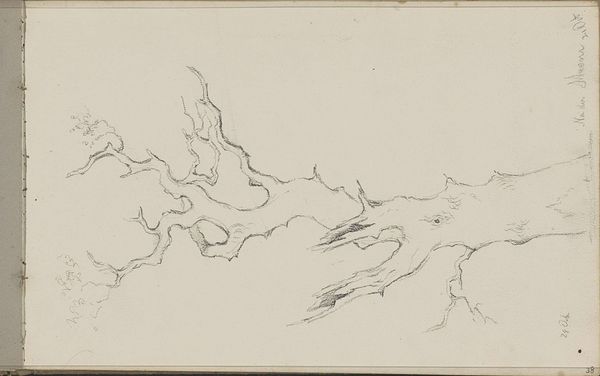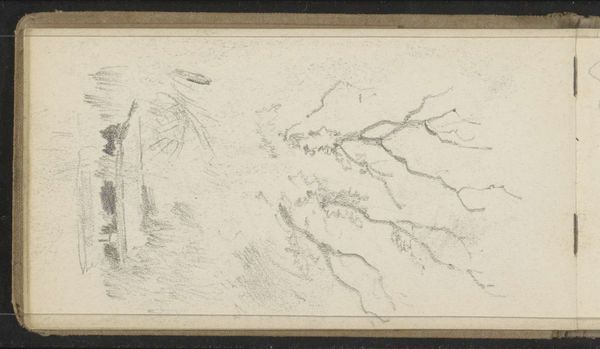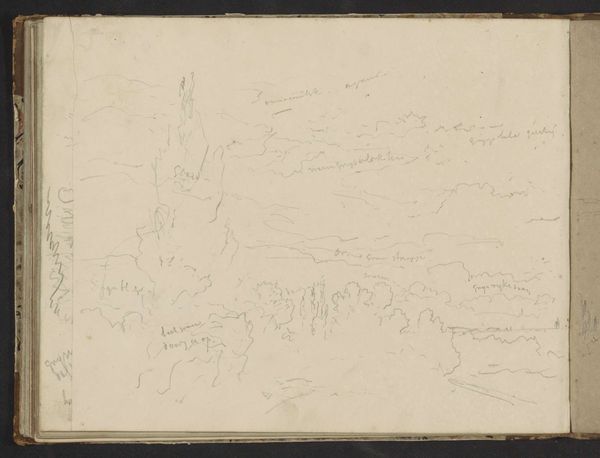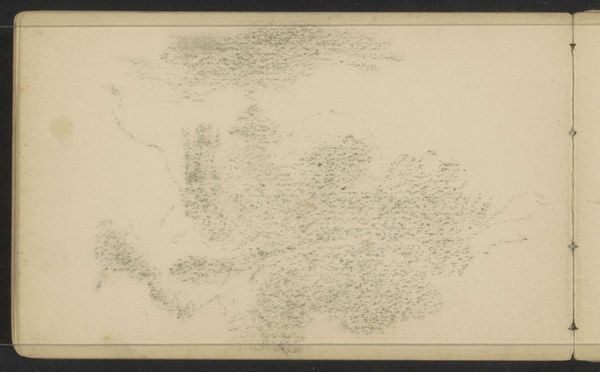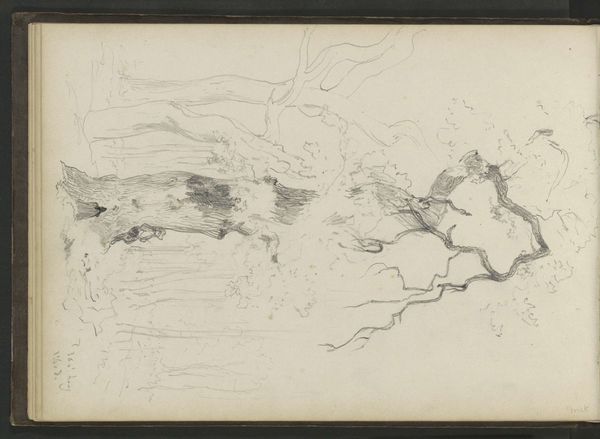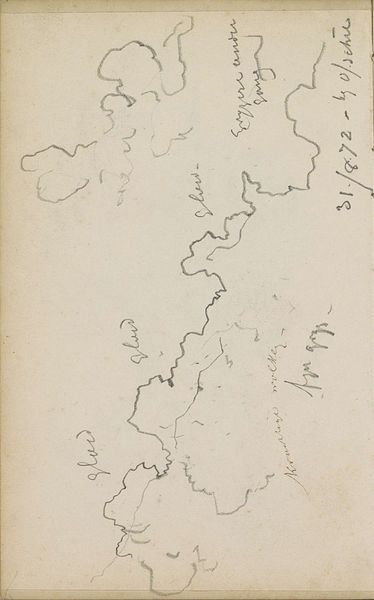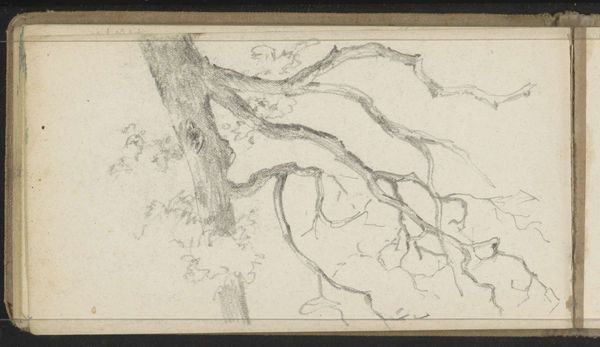
Dimensions: height 104 mm, width 179 mm
Copyright: Rijks Museum: Open Domain
Editor: This drawing, "Landschap met bomen," or "Landscape with Trees," by Willem Cornelis Rip, was made in 1895 using pencil on paper. It's quite minimal; the lines are very faint, almost hesitant. It looks like it's just a quick sketch. What do you see in it? Curator: I see a glimpse into the artist's process. The choice of pencil, easily erased and readily available, suggests an immediacy and practicality. What kind of paper was used, and was it handmade? Machine made paper wasn’t widely available yet, which affects the final work. It indicates a certain social context. Was this paper specifically made for artistic production, or a common paper readily used by others during this time? Editor: I hadn’t considered that. It makes sense to think about how readily available the materials would’ve been. Does the impressionistic style fit into this too? Curator: Exactly! Impressionism wasn’t just about capturing light; it was about challenging academic traditions of art-making. By using everyday materials and sketching in open landscapes, artists disrupted the norms of artistic labor. The quickness and the sketch quality devalues formal artistic rendering; it’s a subversion of classical representation. The paper shows its age, it discolors, deteriorates, and it seems intentional that Rip is capturing it here. Editor: So the materials and the technique aren't just about aesthetics; they're also making a statement about artistic production and value? Curator: Precisely! This "Landscape with Trees" invites us to contemplate art-making itself, looking closely at what labor went into it and the circumstances behind it. It’s not just about seeing trees, it's about observing an artist engaging with his world through easily accessible tools and rejecting art world conventions. Editor: That’s given me a whole new way of thinking about Impressionism! Looking at the piece through a materialist lens has revealed layers I wouldn't have seen otherwise. Curator: And for me it’s refreshing to be reminded that the most humble materials often convey the richest meanings.
Comments
No comments
Be the first to comment and join the conversation on the ultimate creative platform.
